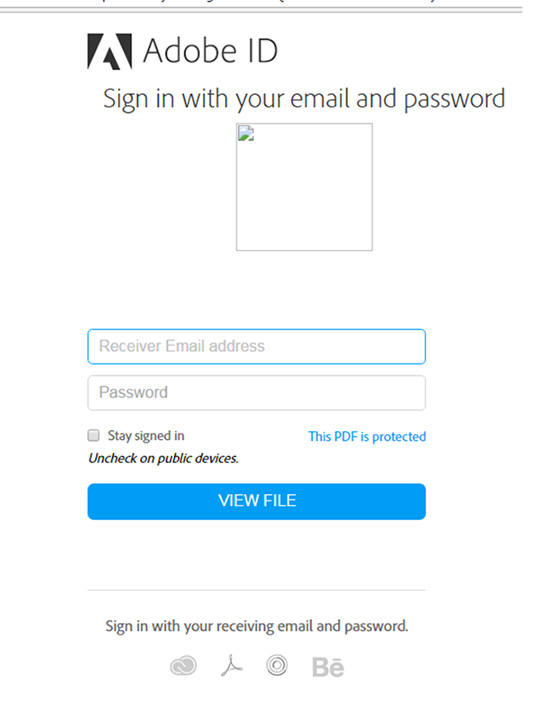HTML_MALPHISH.XUAH
HTML/Phishing.Agent.AT (ESET); Trojan.Malscript (Symantec);
Windows


Threat Type: Trojan
Destructiveness: No
Encrypted: Yes
In the wild: Yes
OVERVIEW
This Trojan arrives on a system as a file dropped by other malware or as a file downloaded unknowingly by users when visiting malicious sites.
TECHNICAL DETAILS
Arrival Details
This Trojan arrives on a system as a file dropped by other malware or as a file downloaded unknowingly by users when visiting malicious sites.
Other Details
This Trojan displays the following images:
It does the following:
- It tricks the users to input their credentials (email and password) in a fake Adobe login site. Once submitted, it redirects users to https://accounts.adobe.com/
- The stolen credentials are sent to {BLOCKED}e.{BLOCKED}l.es/views.php
SOLUTION
Step 1
Before doing any scans, Windows XP, Windows Vista, and Windows 7 users must disable System Restore to allow full scanning of their computers.
Step 2
Scan your computer with your Trend Micro product to delete files detected as HTML_MALPHISH.XUAH. If the detected files have already been cleaned, deleted, or quarantined by your Trend Micro product, no further step is required. You may opt to simply delete the quarantined files. Please check this Knowledge Base page for more information.
Did this description help? Tell us how we did.


